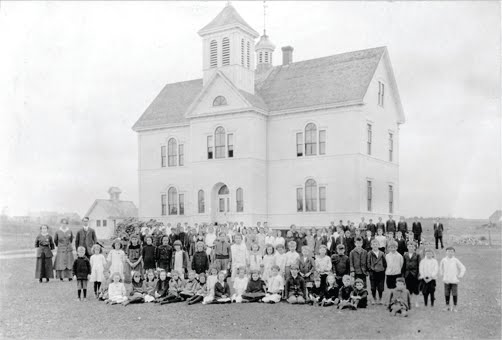Great Village school, circa 1910
From an article in The Telegraph:
Nova Scotia is where Bishop discovered her preoccupation with pattern, process and form. Even then she was weighing up aesthetics and arrangements: “The summer before school began was the summer of numbers, chiefly number eight … Four and five were hard enough but I think I was in love with eight.” When she got stuck on “g” she decided with characteristic independence of judgment that “My alphabet made a satisfying short song, and I didn’t want to spoil it.”
The plain and forthright music of her poems comes from another childhood influence: “My Nova Scotian grandmother was a great hymn singer. I grew up with those sounds, and, in fact, still have hundreds of them floating around in my head.”
The hard brightness of the light in Nova Scotia concentrates its colours. The iridescent firs, blazing red barns and luminous bare fields explain why Bishop writes so often of this landscape as if it were painted: “You know about the Bay of Fundy and its tides, I imagine, that go out for a hundred miles or so and then come in with a rise of 80 feet. The soil is all dark terracotta color, and the bay, when it’s in, on a bright day, is a real pink; then the fields are very pale lime greens and yellows and in back of them the fir trees start, dark blue-green. It is the richest, saddest, simplest landscape in the world … ”
You can visit the Elizabeth Bishop Society of Nova Scotia’s centenary blog here .

